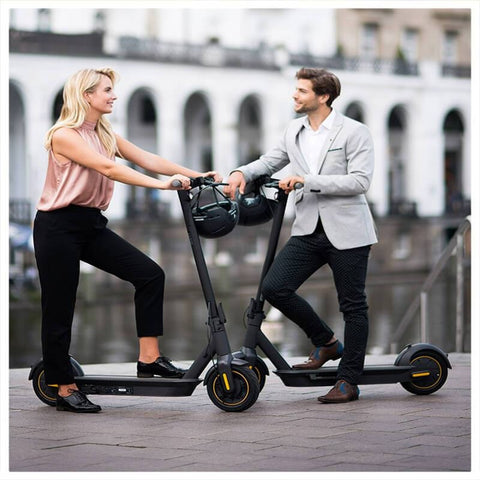While both have their merits, depending on your needs, it can be difficult to determine which is best for you. And, once you've made your decision, it can have a major impact on which electric motorcycle or e-bike you choose, as brands often offer specific types of tires for their models.
Here, we've simplified that consideration, giving you everything you need to know to make an informed decision.

Two forms of pneumatic tires
Inflatable tires, such as the ES-M13 and the Xiaomi M365, as well as the tires on all the e-bikes we stock, come in two forms: tubed and tubeless. While the general idea is very similar - the cavity is inflated to support the tire - tubeless tires are different because there is no inner tube for air to inflate.
Instead, like a car tire, the air is sealed inside due to the tight fit of the rim and the tire itself.
While each type of tubed and tubeless tire has some advantages and disadvantages, pneumatic tires generally accomplish the same goals. They both produce better all-around ride quality and better grip, as well as lower rolling resistance levels that are sometimes easier for home mechanics to use.
Six key factors
1. Ride quality
Winner. Pneumatic tires
Pneumatic tires definitely outperform solid tires when it comes to daily ride quality. Ride quality can include several factors, but they all boil down to your overall riding experience, including elements such as cushioning and compliance, confidence and grip.
Essentially, pneumatic tires are more likely to deform on impact (such as when mounting a trail or rolling over a pothole), making obstacles easier to climb. In addition, this deformation provides significant shock absorption, making for a more comfortable ride.
This makes it easier to use your scooters and e-bikes every day.
2. Rolling resistance
Winner. Pneumatic Tires
One of the recognized benefits of pneumatic tires over solid tires is the reduction in rolling resistance. This is due to the reduced mass (weight) rotating around the rim and the smaller ground contact area compared to solid tires.
For e-bike riders with larger wheels and tires, this reduces the effort required to move forward and the motor doesn't have to work as hard to help you, thus improving battery and motor life.
When it comes to electric scooters, the benefits of ESE are further amplified by the reliance on throttle. Your motor and battery system are almost entirely responsible for all of your forward motion, so reducing the amount of resistance it needs to overcome is important to achieving both range and speed.
3. Puncture resistance
The winner: solid tires
When it comes to puncture resistance, solid tires have the advantage of overinflated tires: if there is no air, then punctures are impossible. For many people, this is a strong plus point. However, the equation is not as simple as it seems, because not all tires are created equal.
All tires are made for a specific purpose. For example, for urban e-bike ES, tires are designed to be thicker and more abrasion resistant than electric road bike tires, where brightness and speed are more important. Some higher quality tires are also equipped with more advanced internal puncture-resistant plies. Therefore, with a high quality tire from a reputable brand, you may find that it provides adequate puncture protection for yourself, especially if the route you ride is regularly cleaned and maintained.
Pneumatic tires can also be reinforced with an anti-puncture fluid to further prevent punctures while retaining their main benefits. This fluid can be inserted into said air cavity, creating a self-hardening layer of fluid that almost instantly stops holes caused by sharp objects. Read our blog for five reasons why you should use puncture prevention fluid. 4.
4. Grip
Winner. Inflatable Tires
The properties of pneumatic tires also make them more effective at gripping the ground in almost all situations, which improves the safety of e-bikes and e-scooters. Their excellent deformability Increasing the contact surface and the tire's contact with the ground improves the grip on time.
Pneumatic tires also tend to use "stickier" rubber compounds, although solid tires have come a long way in recent years in this area as well.
If you have pneumatic tires, you can also adjust the tire pressure (within the recommended ranges). For example, lower pressures in these ranges can provide more effective traction on looser surfaces and in wet conditions

